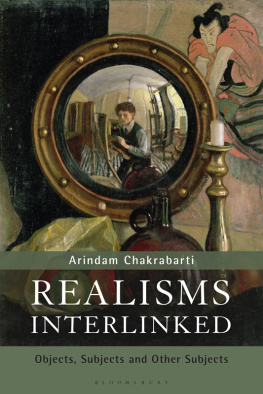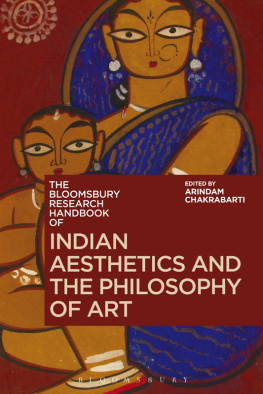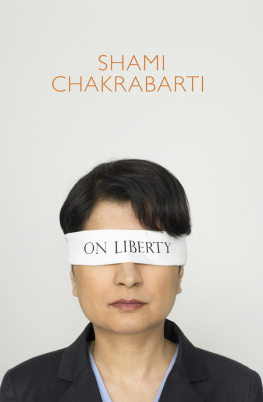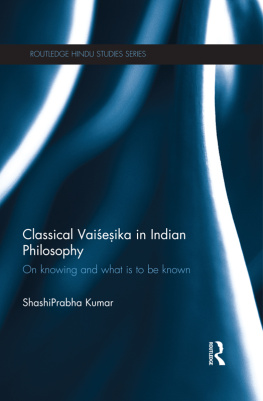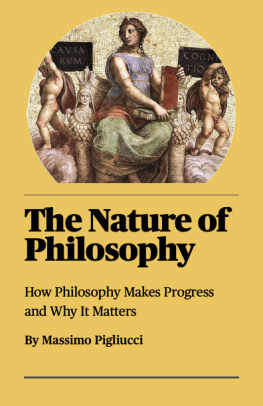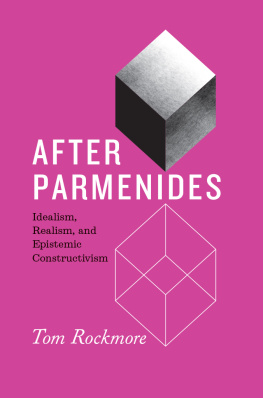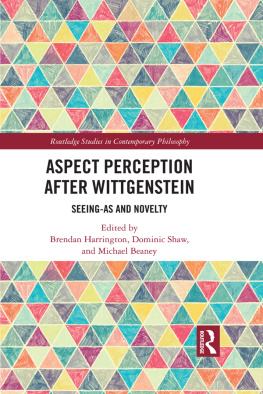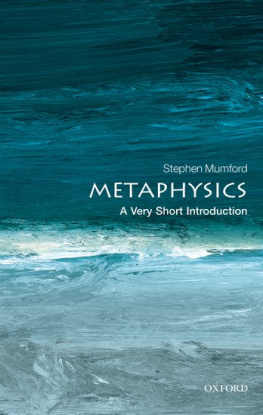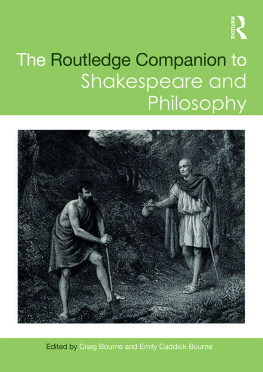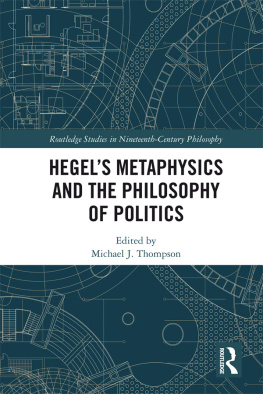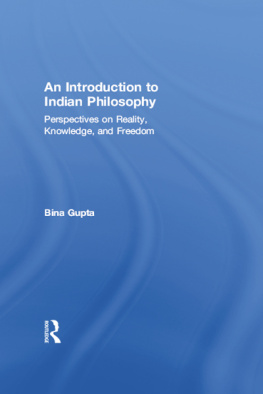Realisms Interlinked
Objects, Subjects, and Other Subjects
Also available from Bloomsbury
Comparative Philosophy without Borders, edited by Arindam Chakrabarti and Ralph Weber
Imagination: Cross-Cultural Philosophical Analyses, edited by Hans-Georg Moeller and Andrew Whitehead
Indian Epistemology and Metaphysics, edited by Joerg Tuske
Natural and Artifactual Objects in Contemporary Metaphysics, edited by Richard Davies
Philosophy of Knowledge: A History, edited by Stephen Hetherington, Nicholas D. Smith, Henrik Lagerlund, Stephen Gaukroger, Markos Valaris
The Bloomsbury Research Handbook of Indian Aesthetics and the Philosophy of Art, edited by Arindam Chakrabarti
The Bloomsbury Research Handbook of Indian Ethics, edited by Shyam Ranganathan
Realisms Interlinked
Objects, Subjects, and Other Subjects
Arindam Chakrabarti

For Vrinda
The chapters of this book were written over a period of twenty-seven years, while I researched, taught, and delivered conference-papers or invited lectures on contemporary Anglo-American and classical Indian epistemology, metaphysics, philosophy of language, and philosophy of mind. I was able to teach in these areas using both Western and Indian analytical philosophies because I was taught by the best of teachers. Of them, the first four (Sir Peter Strawson, Sir Michael Dummett, Professor Bimal Krishna Matilal, and Pandit Vishvabandhu Tarkatirtha) are no more. In their absence, the last two (Professors Prabal Kumar Sen and D. Prahladachar) have been helping me understand the hardest texts of technical Indian philosophy for more than three decades now, setting up unreachable standards of clear exposition and selfless pedagogy.
At the Philosophy department of the University of Hawaii at Manoa, a three-year grant from John Templeton Foundation for research on Realism-links and Concepts of Omniscience enabled me to recruit my former graduate students Benjamin Zenk, Ian Nicolay, Amit Chaturvedi, Jane Allred, Adam Obrien, and Pavel Stankov as research assistants to help me in editing and retyping most of these chapters. Between 2010 and 2018, Dr. Ruth Lenney Kleinfelds endowment for the Eastern Philosophy of Consciousness and the Humanities (EPOCH) program at UH Manoa enabled me to hire Emma Irwin as the most diligent and perceptive editor of my entire manuscript over the last three years. At the final stage, in 2019 Spring, I had editing help from Nicholas Raffel who I could recruit as a graduate assistant when I came to the department of Philosophy at Stony Brook University as the Nirmal and Augustina Mattoo Chair in Indic Humanities.
Finally, these realism-links could not have been forged without the persistent encouragement of the most thoroughgoing anti-realist Mark Siderits (to whom we all owe the phrase fusion philosophy) who sustained me with friendship and philosophical disagreement over the last twenty-four years. Colleen Coalter, the exemplary commissioning editor at Bloomsbury, stood by me throughout this difficult period since offering me the book contract and getting the manuscript reviewed first by three and then two more anonymous referees, to whom I remain grateful.
What is that thing a boy, a young man, and a monkey are intently looking at in El Grecos painting An Allegory (. Similarly, if one is a realist about objects and subjects, one would be logically committed to realism about some universals or repeatable properties out there. A persistent self, over and above fleeting mental states which it owns, secures one kind of unity; and without that unity of a subject of experience, there is no objectivity of the object of experience which demands another kind of unity across different sensory modes of perception. With interconnected realisms about the self and the external object of perception in place, the chocolate candy my eyes see, my tongue and hands can claim to taste and touch, and you and I can correctly claim to touch the same thing on separate occasions. But universals such as tigerness and lotushood secure another kind of unity or property-identity across all the particular beasts we see as tigers, and all those flowers blooming in the water we call lotus, arguably independently of the usage of the words for tigers and lotuses in any particular language. Besides such linking claims connecting metaphysical positions one can occupy in perennial debates concerning the world, the self, other selves, and common features that form natural kinds, this monograph also deals with classical Indian and modern Western refutations of idealism, the question of definition of truth and the status of truths unknown to anyone, and with the possibility or impossibility of non-conceptual perception and our knowledge of our own minds and of other minds.
The three parts of the book are divided according to the three basic concepts presupposed by the simple question: Do you see what I see? which one asks in order to check if one is seeing right. One does not need any special training in philosophy to understand that this question involves the concepts of an object, of myself, and of other subjects of experience. The reason why the concepts of objects, the self, and other selves deserve a fresh set of inquiry, even if my positive agenda of motivating interlinked realisms concerning them faces insuperable difficulties, is that each of these concepts comes already wrapped up in some cross-culturally shared sense of puzzlement.
Objects are of experience but not constituted by experience. They are mind-independent yet mind-intended things. The Sanskrit concepts of artha and viaya both bear the marks of this dual pull. In analyzing the concept of a material object (rpa), an ancient Buddhist text (The Path of Purificationperception. The object has to fit a cognition, but cannot be tucked inside the cognition in such a way as to be reduced to just an aspect of the cognition.
Besides this puzzle, there are other conceptual tussles at the heart of the concept of an object. Swarms of objectsincluding our own and non-human living bodiesconstitute a common world in space and time that many of us at widely different moments and from widely different places can all be part of and observe. The world of events and processes that we suffer, enjoy, or simply undergo in which those objects participate gives rise to other puzzles of relation and constitution of facts and happenings. Then there are puzzles regarding objects and their properties permitting us to correctly or incorrectly arrange them into true and false propositions. Are we to regard those propositions as a distinct class of objects bearing truth-values as their properties? Such are the puzzles that the concept of an object comes wrapped up in.
The concept of the self as a subject of experience and the bearer of self-conscious thoughts brings with it its own share of puzzles. The singular term I which picks out nothing and none other than myself, without changing its sense, seems also to pick out distinct particular persons, one at a time, as the utterer changes. And yet, without flouting Frege, we cannot let a singular term with a single sense pick out distinct particulars as referents. Distinct senses but same reference are possible, as in the case of The author of War and Peace and Leo Tolstoy; but single sense determining many distinct references is not allowable except in case of a predicate expression such as is a flower. (and even there the predicate refers to a single concept) Yet am an I is not a legitimate predicate expression, although one twentieth-century Indian philosopher ended up saying that I is a common noun like the word unique! While each of us can understand I-sentences uttered by others, the full cognitive significance, the token mode of presentation through which each of us refers to herself or himself, is not entirely sharable. The meaning/sense of I seems to be at the same time public and private.
Next page
